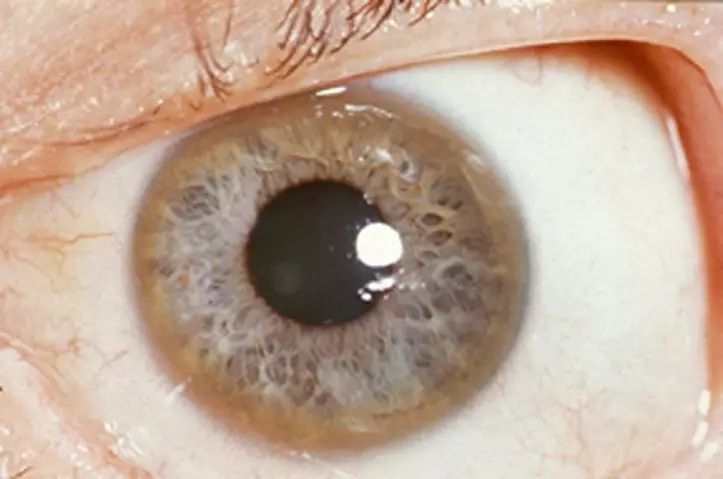The eyes are often seen as a reflection of one’s soul, but they can also serve as a vital indicator of a person’s overall health, providing clues to medical professionals if something concerning is happening internally.
While a sparkle in someone’s eye might indicate joy to most people, for those with medical expertise, it can signal a need for further investigation into that person’s health.
This is why routine visits to the doctor often include an eye examination. Such an exam can quickly detect issues ranging from elevated blood pressure to unhealthy cholesterol levels, and even severe neurological or autoimmune disorders.
If a doctor observes an unusual-colored ring around the iris, it might suggest the accumulation of harmful substances in a vital organ due to a rare genetic condition, or it could indicate the onset of a condition causing the eyes to take on a conical shape.

If a brownish-yellow ring is spotted around your iris, it is a well-known sign of Wilson’s disease, a rare genetic disorder that hinders the body’s ability to eliminate excess copper.
This ring consists of tiny deposits of copper accumulating not only in the eye but also in the brain and liver. Approximately 95 percent of individuals with this condition exhibit this clear external indication of internal dysfunction.
The ring’s visibility increases over time, and most individuals with Wilson’s disease receive a diagnosis before age 35, with some identified as young as five years old.
Copper is vital in small quantities for the development of healthy bones, nerves, and skin pigmentation. It is meant to be expelled from the body via bile produced by the liver.
Other rare conditions can also lead to the formation of this ring, known as a Kayser-Fleischer ring, including certain chronic liver diseases and prolonged exposure to copper in the environment.
Without treatment, the condition can lead to acute liver failure due to copper accumulation, as well as serious symptoms described by the Mayo Clinic, such as jaundice, kidney stones, anemia, and even changes in personality or depression.
Wilson’s disease treatment involves the use of copper chelating drugs, which bind to the copper in the body and move it into the bloodstream for filtration by the kidneys.
This is followed by lifelong medication to prevent copper from accumulating again.

Another concerning condition that can be detected in the eye is keratoconus, which has a different origin than Wilson’s disease, but results in a similar ring around the iris.
Instead of the golden-brown shade seen in a Kayser-Fleischer ring, keratoconus presents as an incomplete greenish-brown circle due to iron deposits in the corneal membrane.
Known as a Fleischer ring, identifying this early symptom can prevent severe eyesight damage, as keratoconus progressively thins and weakens the cornea.
If untreated, the cornea will become increasingly cone-shaped, leading to deteriorating blurry vision.
Treatment options for this genetic condition range from corrective glasses to a full corneal transplant, depending on its severity.
However, if someone remarks on a sparkle in your eye, it likely means you’re in good spirits, as these health conditions are quite rare—Wilson’s disease affects about one in 30,000 people, while approximately one in 1,000 are affected by some form of keratoconus.

